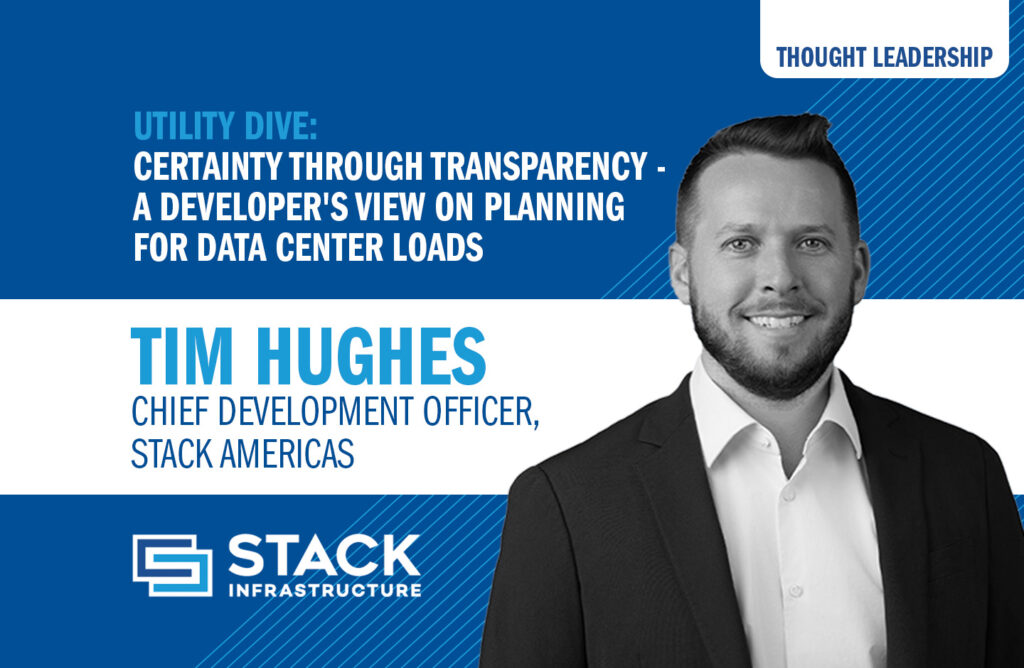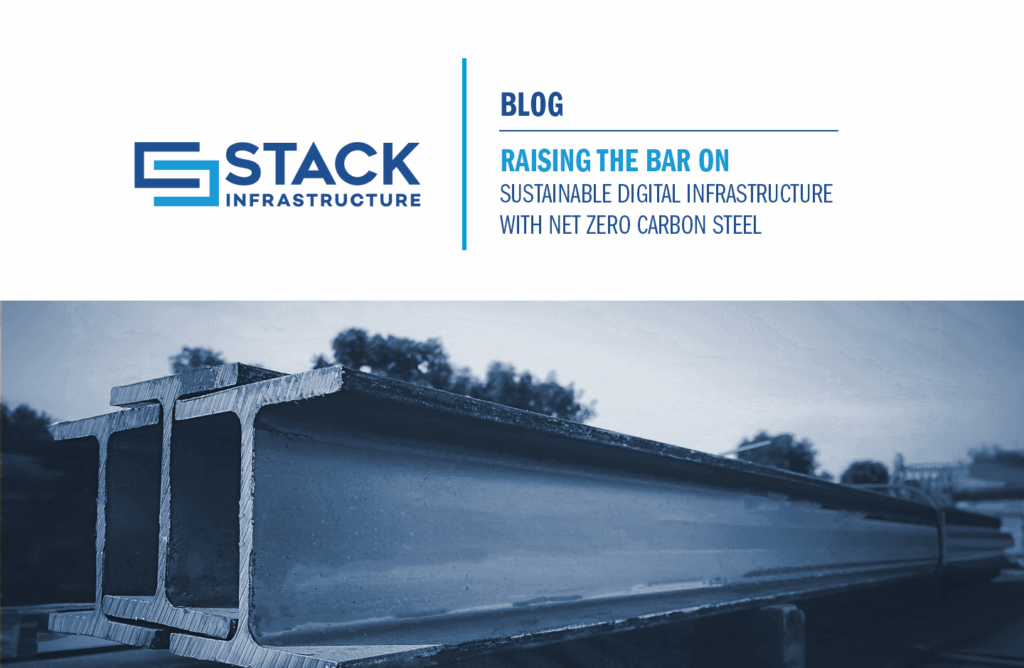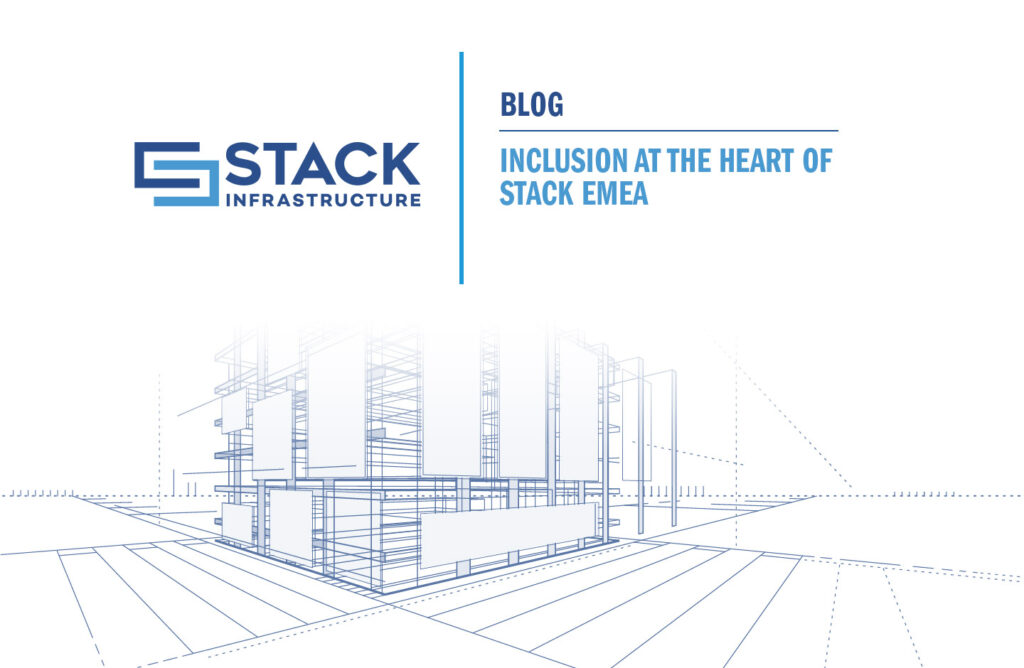Shaping the Data Center Industry with Green Concrete

How green concrete can help the data center industry reduce environmental impact
The Pyramids of Giza. The Great Wall of China. Trajan’s Market.
What do these ancient structures have in common? They all used a form of cement1. All still standing. All still amazing architectural feats that have withstood hundreds of years of natural elements and time.
With such impressive examples of the longevity and integrity of cement as an essential building material, the modern construction industry is confident in its use of cement in concrete—the most used human-made material in the world. However, it is critical that society makes the effort to seek and utilize a replacement for cement if we want to continue development in a sustainable manner.
The startling fact is that the concrete industry comprises a colossal 8% of the globe’s greenhouse gas emissions as the third-most pollutant industry2. A large portion of concrete’s carbon emissions result from the cement-making process where fossil fuels are used to heat and mix limestone and clay. Consequently, approximately 1,300 pounds of carbon dioxide are released for every ton of cement produced3; that’s equivalent to emissions from the average passenger vehicle driving nearly 1,500 miles4.
Concrete is so crucial to contemporary development that the world produces 32 billion tons of it each year2. With a compound annual growth rate (CAGR) of 10.99% from 2021 to 20285, the data center industry heavily relies upon the use of concrete in the construction of hyperscale facilities, which totaled 600 in early 2021 and breached 700 by the end of the same year, resulting in the global data center market seriously considering the environmental impact of concrete6. Concrete will not disappear overnight, but cement alternatives can be utilized today to help decarbonize the data center industry’s footprint.
Making Concrete Green
“Green” concrete is so called not because of its coloring—it’s gray, like most concrete—but because of its eco-friendly objective. Green concrete modifies the mix of ingredients within concrete to mitigate its resulting amount of embodied carbon. Waste ingredients, such as fly ash, silica fume, and blast furnace slag, among others, can be recycled to replace portions of cement within the concrete mix, thereby reducing its overall carbon emissions.
For example, fly ash, a byproduct of coal-fired power plants and blast furnaces, can substitute up to 30% of cement7, mixing it nearly pound for pound as a partial replacement and decreasing concrete’s embodied carbon by approximately 390 pounds per ton of cement. While it is not yet net zero, green concrete does reduce overall environmental impact, making it a more sustainable solution for construction and development.
The concept of green concrete developed after the 1997 Kyoto Protocol, which incited international efforts to mitigate climate change by slashing greenhouse gas emissions. In Denmark, a collection of businesses and educational institutions established the Danish Centre for Green Concrete in 1998 in an effort to research lessening the environmental impacts of concrete through admix modifications8. While the intention of green concrete is relatively recent, the use of supplemental aggregates to reduce cement in concrete dates further back.
The Beginnings of Fly Ash Concrete
In 1937, Raymond E. Davis, professor of civil engineering and director of the Materials Testing Laboratory at the University of California at Berkeley, and his associates published a paper on the properties of concretes containing fly ash9. The study found that fly ash displays a high degree of pozzolanic activity and can act as a replacement for natural pozzolans, or materials that have cementitious properties.
A little over a decade later in 1948, the Hungry Horse Dam was built with approximately 120,000 tons of fly ash within its total 3 million cubic yards of concrete10. The 564′ high dam was the third largest and second highest concrete dam in the world at the time of its completion in 1953 and stands today as a testament to the benefits of fly ash as a substitute for cement in concrete.
The Advantages of Fly Ash in Green Concrete
In addition to supporting decarbonization, green concrete offers various advantages that make it an attractive alternative for the data center industry:
- Recycled waste ingredients
Green concrete reuses coal ash that would otherwise end up in either 310 landfills spanning an average of 120 acres each at a depth of 40′, or in 735 large ponds, called surface impoundments, covering an average of 50 acres each at a depth of 20′, according to the Environmental Protection Agency (EPA)11. Fly ash concrete keeps 12.6 million tons of coal ash out of these disposal sites, preventing potential land or water pollution.
- Reduced cost
Fly ash is a more economical solution and is less expensive than Portland cement, the most common type of cement in use12. Fly ash as a partial substitution for cement can reduce the total cost of concrete up to 15%13.
- Structural enhancements
The use of fly ash to produce green concrete has multiple performance gains in both the fresh concrete state and hardened concrete state, depending on the percentage of fly ash to cement within the concrete mix14.
Fresh concrete exhibits:
- Improved workability
- Decreased water demand
- Reduced heat of hydration
Hardened concrete displays:
- Increased strength over time
- Reduced permeability
- Improved resistance to sulfates and corrosion
Overall, green concrete is more environmentally friendly and cost effective than cement. From a technical perspective, green concrete using fly ash is essentially the same product as Portland cement-based concrete—if not better—equating to a like-for-like replacement, as we thus far understand it.
Research & Development into the Limitations of Fly Ash in Green Concrete
Green concrete has several setbacks that data center developers must consider before making the switch from cement-based concrete14:
- Lower early strength
Depending on the percentage of fly ash in the mix, fly ash concrete exhibits a lower early rate of strength gain with less compressive strength after seven days of curing but is nearly on par or, in some cases, beyond the strength of concrete with no fly ash by 28 days15. While Portland concrete often slows down after 28 days16, fly ash concrete continues to increase strength for a longer period of time of up to 180 days due to its pozzolanic reaction. The slower early rate of strength gain may require forms to be strengthened to bear the hydraulic loads or could delay form removal and safe opening for people.
- Seasonal limitations
Much like conventional concrete, fly ash concrete may perform less favorably in cold conditions, which can further increase the time it takes to gain strength. However, if data center construction must occur during cold weather—which, as the American Concrete Institute defines, is “a period when the average daily ambient temperature is below 40°F for more than three successive days” or less than 50°F for more than half of a 24-hour period17—then methods such as reducing the water-to-cement ratio can mitigate the decreased rate of hydration and increase setting times18.
- Lack of historical data
Studies have shown that fly ash concrete tests the same as cement-based concrete, and yet our understanding of its durability over time is extremely limited in comparison to the historical data of cement-based concrete’s resilience7. The documented use of fly ash in concrete does not yet date 100 years unlike Portland cement, which was invented in 1824 and has nearly 200 years of data. This unknown resulting wear and tear gives cause for concern for data center developers.
- Dependent upon coal combustion
Green concrete sustainably reuses byproducts from the burning of coal, a non-renewable fossil fuel, but what happens once coal and its waste ingredients are depleted? What if coal combustion is eliminated even sooner through much-needed government policies and the use of renewable energy? Carbon capture, an emerging technology, could be the very solution in the near future.
The Future of Green Concrete
Since fly ash is a finite ingredient, the data center industry must contemplate the future of green concrete and how to maintain its reduced carbon. One such method of achieving green concrete is through carbon capture, utilization, and storage.
With carbon capture, industrial gas companies provide carbon dioxide extracted from the atmosphere which is then introduced into the concrete creation process. Once the recycled carbon dioxide is injected, it goes through a mineralization process that chemically changes the carbon dioxide into calcium carbonate and locks it into the concrete. This mineralization improves the material’s compressive strength, allowing companies to use less cement in the mix to meet strength requirements.
Currently, carbon utilization technologies are not proven at scale, and therefore, are not an immediate solution to the data center industry’s need for a decarbonized concrete. However, there is the opportunity that commercial-scale carbon capture technologies may come into market in the next 10-20 years19, allowing the data center industry to further improve the sustainability of its facilities.
The State of Green Concrete in Data Center Development
The use of green concrete within data center development decreases the Scope 3 emissions within the facility’s value chain, thereby reducing its embodied carbon and overall carbon footprint. Green concrete can help hyperscalers and large enterprises lessen their environmental impact, achieve corporate sustainability goals, and support their own customers’ standards in ecological stewardship.
However, green concrete using fly ash has less than 100 years of data, while cement-based concrete has centuries of monumental testaments that allow scientists and engineers to determine a structure’s state of wear within 10 years, 20 years, 40 years, and more, simply based on its concrete mix. While the lack of historical data could be the reason for inhibiting widespread implementation across the data center industry, the need for further research and development is critical.
To mitigate industry apprehension and ensure the safety of all people within and around our facilities, STACK Infrastructure is trialing the use of green concrete with fly ash only for cast-in-place concrete such as footings, foundation, and topping slabs. STACK works closely with hyperscale clients interested in improving their carbon footprints to determine if green concrete is viable for specific applications. STACK and our clients will examine how the green concrete performs over time before considering wider use of it.
STACK is actively taking strides to reduce the environmental impact of our data centers, and green concrete is one such sustainable way to help achieve our targets and align with the goals of our clients. Nevertheless, we must prioritize the safety of our partners, clients, and surrounding communities. Cautiously experimenting with green concrete in our data centers is the natural compromise of these two deeply important values. We appreciate the support of our clients as we work together toward our shared goal of a sustainable future one step at a time.
Perhaps one day, years from now, data centers built entirely from green concrete will stand as historical monuments of an industry on the cusp of widespread collective change.
Authored by Matt Bourne, Director, Strategy & Development at STACK; Tim Hughes, VP of Strategy & Development at STACK; and Mallika Subramaniam, Director of Development at STACK.
Cited Sources
- Scientific, G. (2022, February 2). The history of concrete. Giatec Scientific Inc. Retrieved March 7, 2022, from https://www.giatecscientific.com/education/the-history-of-concrete/
- International Organization for Standardization. (2021, December 18). ISO/TC 71 Strategic business plan. Retrieved March 7, 2022, from https://isotc.iso.org/livelink/livelink/fetch/2000/2122/687806/ISO_TC_071__Concrete__reinforced_concrete_and_pre-stressed_concrete_.pdf?nodeid=1162199&vernum=0
- Brogan, C. (2021, May 20). Best ways to cut carbon emissions from the cement industry explored: Imperial News: Imperial College London. Imperial News. Retrieved March 7, 2022, from https://www.imperial.ac.uk/news/221654/best-ways-carbon-emissions-from-cement/
- Environmental Protection Agency. (2021, March). Greenhouse Gas Equivalencies Calculator. EPA. Retrieved March 14, 2022, from https://www.epa.gov/energy/greenhouse-gas-equivalencies-calculator
- Verified Market Research. (2021, September 30). Data Center market size worth $ 1,12,465.55 million, globally, by 2028 at 10.99% CAGR: Verified market research®. GlobeNewswire News Room. Retrieved March 7, 2022, from https://www.globenewswire.com/news-release/2021/09/30/2306286/0/en/Data-Center-Market-size-worth-1-12-465-55-Million-Globally-by-2028-at-10-99-CAGR-Verified-Market-Research.html
- Synergy Research Group. (2021, November 17). Hyperscale data center capacity doubles in under four years; the US still accounts for half: Synergy Research Group. Hyperscale Data Center Capacity Doubles in Under Four Years; the US Still Accounts for Half | Synergy Research Group. Retrieved March 7, 2022, from https://www.srgresearch.com/articles/as-hyperscale-data-center-capacity-doubles-in-under-four-years-the-us-still-accounts-for-half-of-the-total
- Lahri, A., & Dixit, D. (2015). Alternatives to Cement in Concrete – A Review. International Journal of Scientific & Engineering Research, 6(10), 50–56, from https://www.ijser.org/researchpaper/Alternatives-to-Cement-in-Concrete-A-Review.pdf. https://doi.org/10.14299/000000
- Damtoft, J. S., Glavind, M., & Munch-Petersen, C. (2001, September). Danish Centre for green concrete. Retrieved March 8, 2022, from http://www.greenconcrete.org/images/139155_Physical%20and%20Thermodynamic.pdf
- Davis, R.E., Carlson, R.W., Kelly, J.W., & Davis, H.E. (1937). Properties Of Cements And Concretes Containing Fly Ash. Retrieved March 8, 2022 from https://www.semanticscholar.org/paper/Properties-Of-Cements-And-Concretes-Containing-Fly-Davis-Carlson/e3b0593130c2f91a9f9419994c6d422db3ff11d9
- Swenson. (2018, January 8). Experts propose research priorities for making concrete ‘greener’. NIST. Retrieved March 7, 2022, from https://www.nist.gov/news-events/news/2013/04/experts-propose-research-priorities-making-concrete-greener
- Environmental Protection Agency. (n.d.). Frequent Questions about the 2015 Coal Ash Disposal Rule. EPA. Retrieved March 7, 2022, from https://www.epa.gov/coalash/frequent-questions-about-2015-coal-ash-disposal-rule
- Hotza, D., & Maia, B. G. O. (2015). Environmental performance and energy assessment of fired-clay brick masonry. ScienceDirect. Retrieved March 7, 2022, from https://www.sciencedirect.com/science/article/pii/B9781782423058000206?via%3Dihub. https://doi.org/10.1016/B978-1-78242-305-8.00020-6
- Shaker, M. R., Bhalala, M., Kargar, Q., & Chang, B. (2020). Evaluation of alternative home-produced concrete strength with economic analysis. Sustainability, 12(17), 6746. https://doi.org/10.3390/su12176746
- Fly Ash Facts for Highway Engineers: Chapter 3 – Fly Ash in Portland Cement Concrete. U.S. Department of Transportation/Federal Highway Administration. (2017, June). Retrieved March 7, 2022, from https://www.fhwa.dot.gov/pavement/recycling/fach03.cfm
- Yerramala, A., Chandurdu C, R., & Desai V, B. (2012). Influence Of Fly Ash Replacement On Strength Properties Of Cement Mortar. International Journal of Engineering Science and Technology, 4(8). Retrieved from https://citeseerx.ist.psu.edu/viewdoc/download?doi=10.1.1.1037.2432&rep=rep1&type=pdf. https://doi.org/10.21817/ijest
- Tafheem, Z. Khusru, S. & Nasrin, S. (2011). Environmental Impact of Green Concrete in Practice. Retrieved March 7, 2022 from https://www.researchgate.net/publication/280445221_Environmental_Impact_of_Green_Concrete_in_Practice#pf2.
- Cold Weather Concrete. American Concrete Institute. (n.d.). Retrieved March 7, 2022, from https://www.concrete.org/topicsinconcrete/topicdetail/Cold%20Weather%20Concrete?search=Cold+Weather+Concrete
- Boral Resources. (2018). Fly ash in cold weather concrete. Retrieved March 8, 2022, from https://flyash.com/wp-content/uploads/assets/Boral-TB26-Fly-Ash-in-Cold-Weather.pdf
- Clifford, C. (2021, February 1). Carbon capture technology has been around for decades – here’s why it hasn’t taken off. CNBC. Retrieved March 7, 2022, from https://www.cnbc.com/2021/01/31/carbon-capture-technology.html
March 22, 2022




